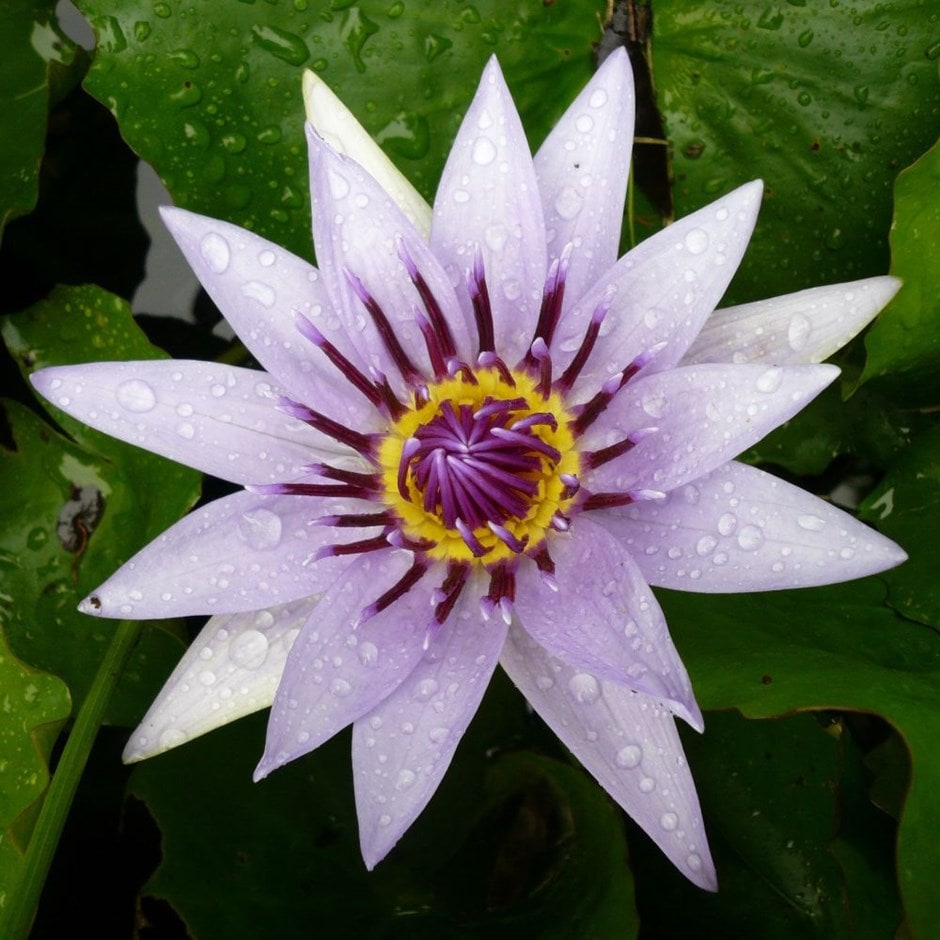Nymphaea capensis
cape blue water lily (syn. Nymphaea Colorata)
This pond plant dies right back in autumn, then fresh new growth appears again in spring.
- Position: full sun
- Depth of water: 45-90cm
- Rate of growth: average
- Flowering period: June to September
- Hardiness: frost tender (will need winter protection)
First described by A. Peter in 1928, 'Colorata' is a gorgeous waterlily that is native to tropical East Africa. A day-blooming aquatic perennial, it forms a clump of large and lustrous, rounded green leaves, accompanied by purple-violet flowers, each with a ring of pointed petals that surround a crown of purple stamens. It makes a stunning addition to smaller ponds. - Garden care: Water lilies flourish in still water, so do not plant them near a pond pump or fountain, particularly where the water can splash onto their leaves. These water lilies are potted up (using a suitable aquatic compost), into specialist pots that are made of a fine mesh, which allows water to circulate through the compost. This ensures that the plants maintain access to both oxygen and nutrients. When placing the plant in the pond, it’s a good idea to initially pop the waterlily on a stack of bricks - allowing the emerging leaves to float on the surface of the water. As the plant matures, remove one layer of bricks at a time, gradually lowering the plant deeper into the pond until the desired depth has been reached.
As the temperatures drop in autumn, gently lift the plant (and it's pot) from the pond, cut off any tatty, damaged or dead foliage, and move it to a sheltered position where it can overwinter. Place it in a large bucket or tank and sink the pot in water, submerging the upper surface of the compost by up to 15cm. Then, when the temperates start to rise again in spring (and after the risk of frost has passed), you can move the plant back to the pond, gradually settling it in as before.
Please note: When it arrives, your plant may not have many (if any) leaves. That may be because of the time of the year, but also because the foliage is fragile when not supported by water, and can easily be damaged. Therefore, we feel that in the longer term, it is best to send them out in a slightly less advanced stage.

